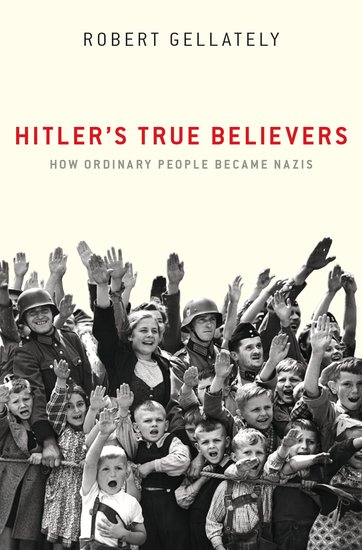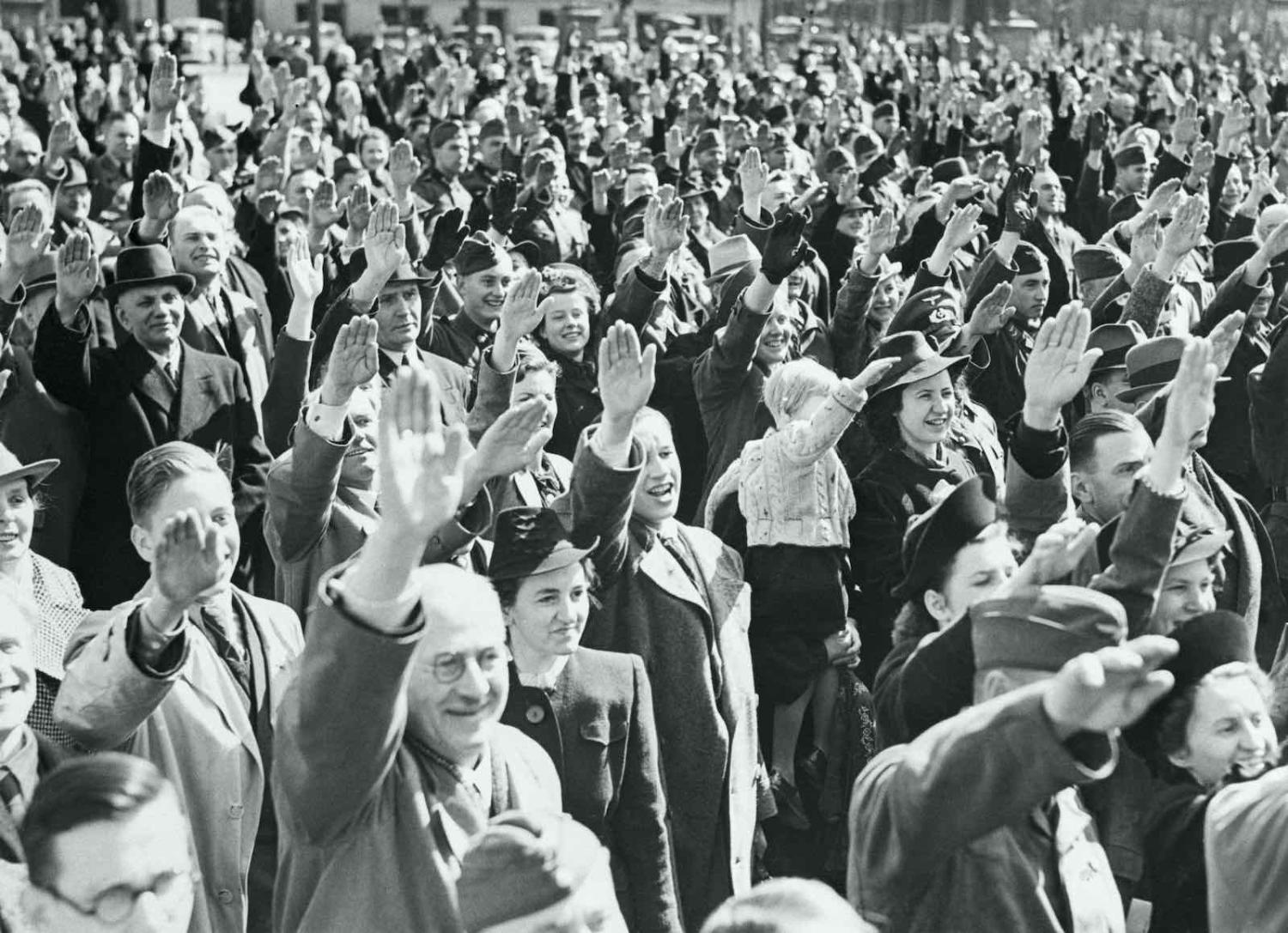 Book review: Robert Gellately, Hitler’s True Believers: How Ordinary People Became Nazis (Oxford University Press: Oxford, 2020)
Book review: Robert Gellately, Hitler’s True Believers: How Ordinary People Became Nazis (Oxford University Press: Oxford, 2020)
In the end, it was all about The Idea. Thus, the historian Robert Gellately explains why so many Germans passionately attached themselves to National Socialism.
In his new book, Hitler’s True Believers: How Ordinary People Became Nazis, Gellately argues that Hitler succeeded because the vision he harboured met a ready reception among millions of Germans who felt humiliated by the end of the First World War and frustrated with the economic chaos and political fragmentation that followed. They yearned, he argues, for a “National Community” (Volksgemeinschaft) in which individual and class interests would be ruthlessly subordinated to those of the nation.
This was a vision of a community that plainly demarcated its lines of inclusion and exclusion, and into which violence and racial engineering were baked. For those it embraced, it was emancipating, even exciting. For those it excluded, it was lethal. The upshot is that the role of German society itself in the formation of the National Socialist ideology was every bit as important as that of Adolf Hitler and his rabble-band of brown-shirted lackeys.
The idea that it was precisely the vision of a Volksgemeinschaft that mobilised the German nation behind Hitler is not a new one. Indeed, over the past 20 years or so, the Volksgemeinschaft has become the pre-eminent scholarly concept in capturing the remarkable degree of consensus that seemed to permeate German society in the 1930s. We have come a long way from the post-war fantasy that the crimes of Nazism were solely the doings of an evil gang of senior henchmen.
In defending the analytical value of the Volksgemeinschaft, Gellately takes aim at a number of opposing theses that continue to claim their champions: that the German people were hoodwinked by bread and circuses and the irresistible power of a charismatic leader; that the Nazi dictatorship was buttressed solely by terror and fear; that ideology mattered much less than individual or class interest; that the Nazis’ supporters did not know what their movement was “really” about. Marshalling a vast range of diaries, letters, secret service analyses and reports from the opposition underground, he makes a compelling argument that this was not the case.
Subsisting just below the surface of the Führer’s grand vision was a jumble of incoherent and protean ideas – a mix that party leaders used to their own advantage, opportunistically alternating between positions, depending on their audience.
Witness, for instance, the overwhelming figures in support of Nazi policies revealed in the plebiscites conducted between 1933 and 1935 (even despite the widespread intimidation and manipulation, the plebiscites were able to move the Socialist underground to lament that “the number of sincere supporters of the regime is still underestimated abroad”). Or, more horrifically, the crowds of Germans who enthusiastically cheered on the violence and savage rituals of humiliation routinely performed on Jews in towns across the country, long before anti-semitic discrimination had been fully enshrined in German law.
The consequences that the author draws from his argument will not be to everybody’s taste. Unlike many historians, Gellately does not hesitate in using the word “socialist” to describe the essence of the Volksgemeinschaft ideal. After all, he stresses, it was the internationalism of Marxism that Hitler so abhorred, not its veneration of the working class or its distrust of finance capital. Hitler, to be sure, was never about nationalising industry or redistributing land – big industry flourished under the Nazis, and the regime mercilessly persecuted and murdered Social Democrats and Communists. But his was nevertheless a collective endeavour, which radically subjugated sectional and personal interest to that of the race.
Even more problematic is the question of how far the notion of the Volksgemeinschaft ideal can take us in comprehending the complexities of interwar German society, and especially in understanding how this society changed over the course of time – especially after the Nazis’ ascent to power in 1933. Indeed, the book’s focus on an all-embracing Volksgemeinschaft often seems to contradict Gellately’s argument that an essential element of Nazism’s appeal derived from its vagueness and variability: one could agree with certain elements of Hitler’s program while unreservedly abhorring others. Subsisting just below the surface of the Führer’s grand vision was a jumble of incoherent and protean ideas – a mix that party leaders used to their own advantage, opportunistically alternating between positions, depending on their audience. Regardless of Nazi rhetoric, this remained a society full of conflicting interests.
Hitler, Gellately is at pains to stress, was always immensely cautious of public opinion, meaning he was often compelled to restrain the armies of rabble-rousing streetfighters, revolutionary dreamers and esoteric fantasists that his movement attracted. And he oscillated not just in minor matters, but on such big questions as the places of industry, gender and religion in the new German Reich. Furthermore, the Nazis never did manage to mobilise the degrees of support among Catholics and the working class that they desired. In the long run, indeed, the grandness of the vision was decisive – but might the notion of a Volksgemeinschaft as the mobilising force behind Nazism’s support perhaps be too general?
Though it is not without its problems, Hitler’s True Believers ought to be of interest to non-scholars as well as specialists. It is unpretentiously written, avoids excessive detail, and charts the whole evolution of the Nazi movement from the First World War to the Second in an easy-to-follow narrative. From its pages emerges a convincing picture of an interwar Germany in which Nazism no longer seems quite so improbable.

